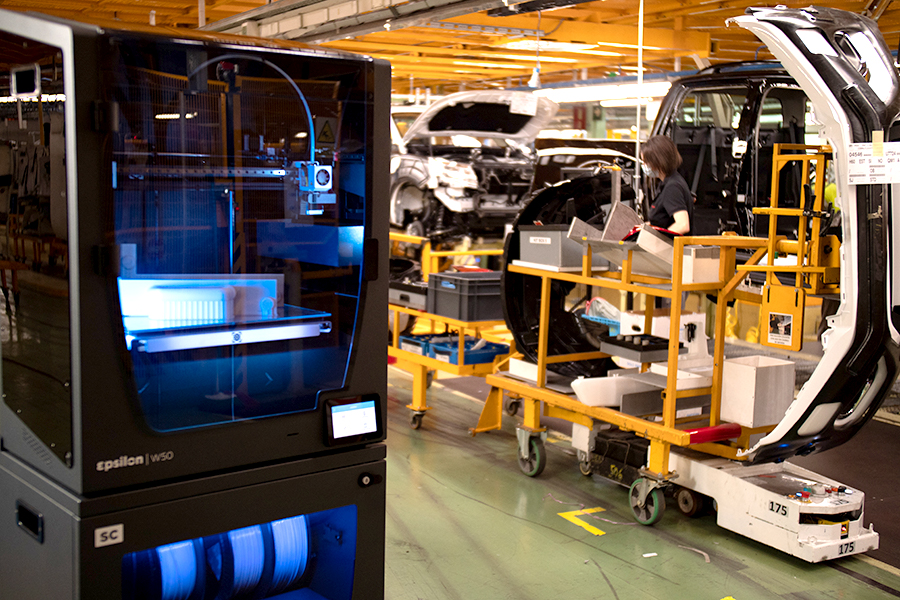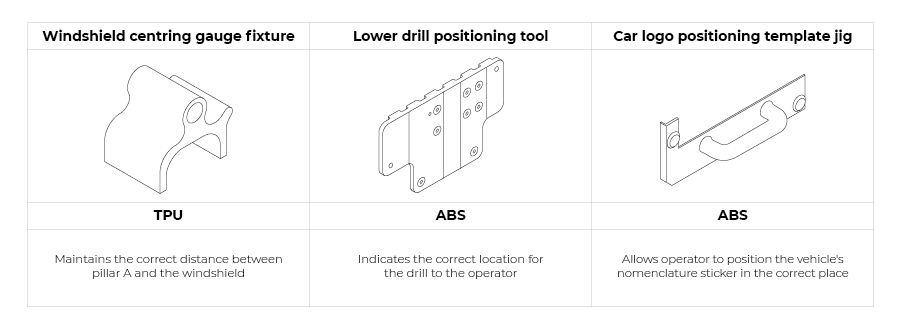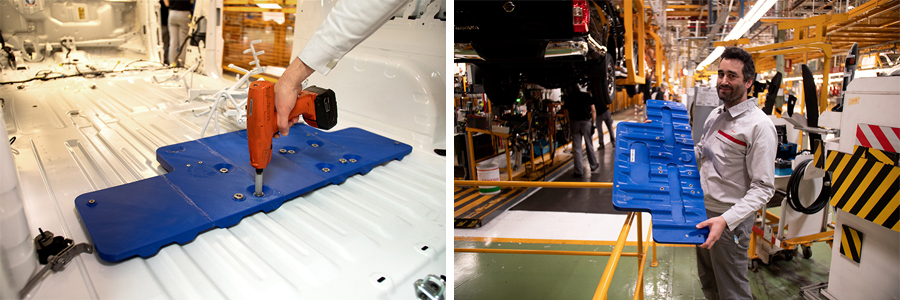
A recent case study reminds us that industrial 3D printing doesn’t just mean large industrial equipment.
It’s easy when thinking about automotive 3D printing to consider the big, flashy applications and technologies. Multi-million dollar industrial 3D printers bringing out metal chassis, splashy sports supercars with fully 3D printed bodies, and even customizable aspects often make the headlines these days.
But desktop and workbench extrusion-style 3D printers are perhaps making a bigger impact in the less-thrilling applications that make automotive manufacturing possible.
Automotive giant Nissan invested in its first BCN3D 3D printer in 2014. That system paid for itself after 3D printing its first three tools.
“When we started in 2014, for the first simple tool we wanted to print we were offered costs of around 400€ for machining. Instead, we did it here on our factory premises and with 3 tools we had already amortized the machine,” said Enric Ridao, Trim & Chassis Manufacturing Kaizen Engineer at Nissan Motor Ibérica Zona Franca, Barcelona.
Since then, the automotive company has set up a small farm of BCN3D systems, including the desktop Sigmax 3D printer and the larger Epsilon series. Nissan is also one of the first to bring in the recently BCN3D Smart Cabinet. More than 700 tools, jigs, and fixtures have emerged from the Nissan 3D printing setup.

BCN3D shares a look at some of Nissan’s specific uses. For example, just a few include:
- Windshield centring gauge fixture
- Material: TPU
- Cost: 8€
- Printing time: 14 h.
- Size: 100 x 120 x 80 mm
- Lateral drill positioning tool
- Material: ABS
- Cost: 18,50€
- Printing time: 32 h. / part
- Size: 700 x 700 x 12 mm
- Hood support tool
- Material: PLA
- Cost: 2,65€
- Printing time: 10 h.
- Size: 120 x 60 x 40 mm
- Tail light positioning gauge jig
- Material: TPU
- Cost: 0,40 €
- Printing time: 40 min.
- Size: 30 x 30 x 3 mm

The lower drill positioning tool is the largest and most expensive in the BCN3D ebook highlighting 3D printing usage at Nissan. A tool this size made traditionally would have had to be outsourced, machined, and shipped back to the manufacturer. Instead, it can be 3D printed on-site, as BCN3D explains of the large tool:
“Made up of 5 connected parts and 1000x400x15mm in size, this part makes a name for itself as the largest 3D printed part you can find in Nissan today. Each part of this positioning tool took an average of 15 hours to print using technical material ABS, each coming in at a cost of 21.50€. This part functions as an indicator for the drill location to keep consistency throughout each vehicle being assembled, and to provide ease-of-use to the operator. The tool also incorporates some bushings, which means that the part itself lasts longer, and damage to the plastic will be prevented.”
Carlos Rellán Martínez, manager of maintenance & engineering facilities at Nissan Motor Ibérica Zona Franca, Barcelona, notes:
“The performance achieved in terms of reliability has been excellent. Our printer runs nearly 24 hours a day and every year we’re printing around 100 different jigs and tools for specific use in our processes.
Outsourcing tools to a mechanical supplier was 20 times more expensive than 3D printing the same parts, while the wait for tools went from a week down to one day. By introducing 3D printing, we have increased added value and generated low costs, without high delivery times. We have paid off the investment in the printers very quickly.”
Running an on-site 3D printer farm is keeping Nissan going, without the wait or costs associated with previously-standard sourcing. Tools, jigs, and fixtures shouldn’t be the limiting factors to assembly line productivity — and bringing 3D printing to the source of need is a nice solution.
Per BCN3D’s case study, Nissan is also exploring metal 3D printing options for even further incorporation of these technologies. There’s no one solution when it comes to manufacturing; 3D printing works best alongside traditional technologies, and, increasingly, alongside other 3D printings technologies too.
Via BCN3D
